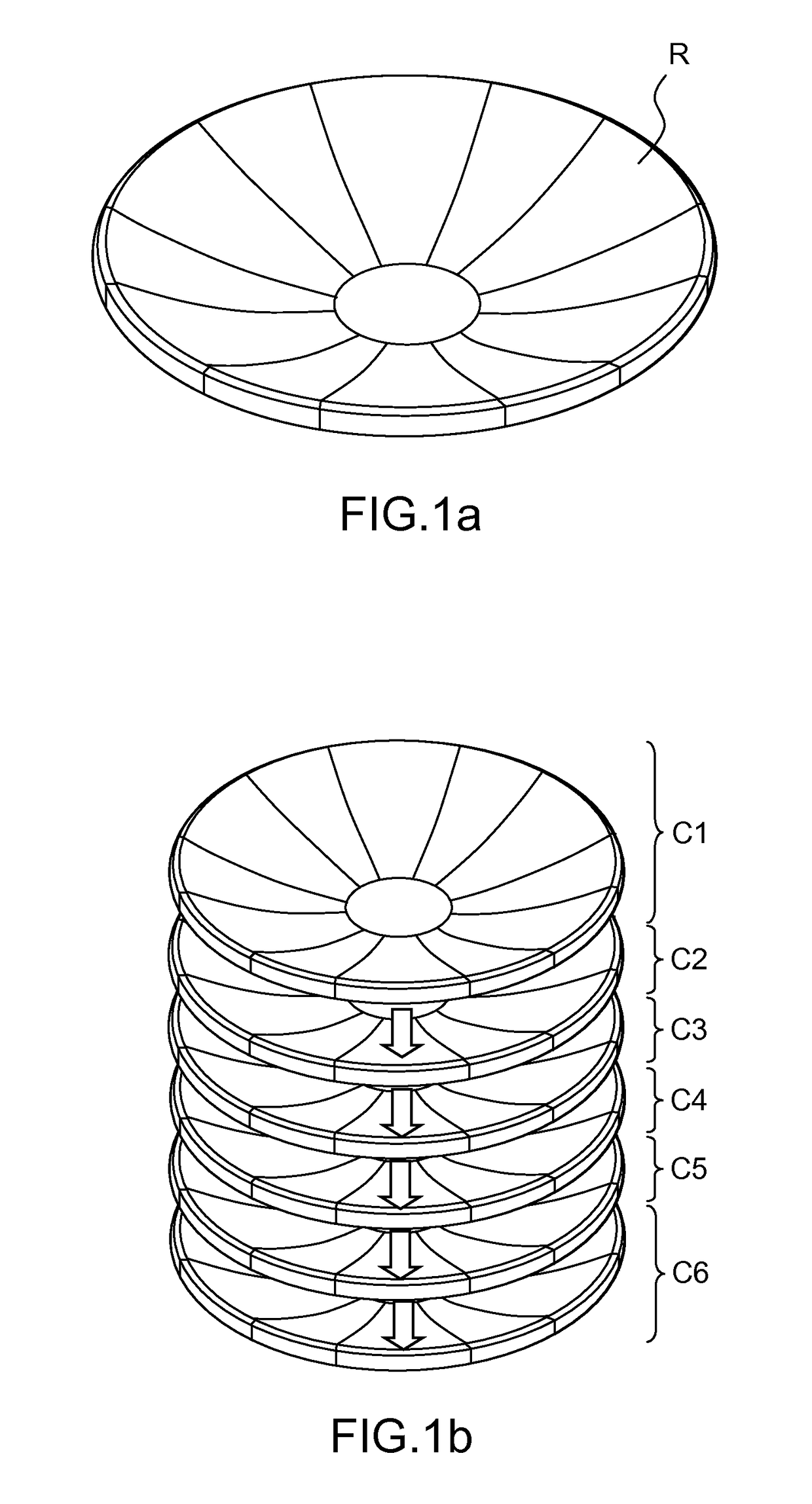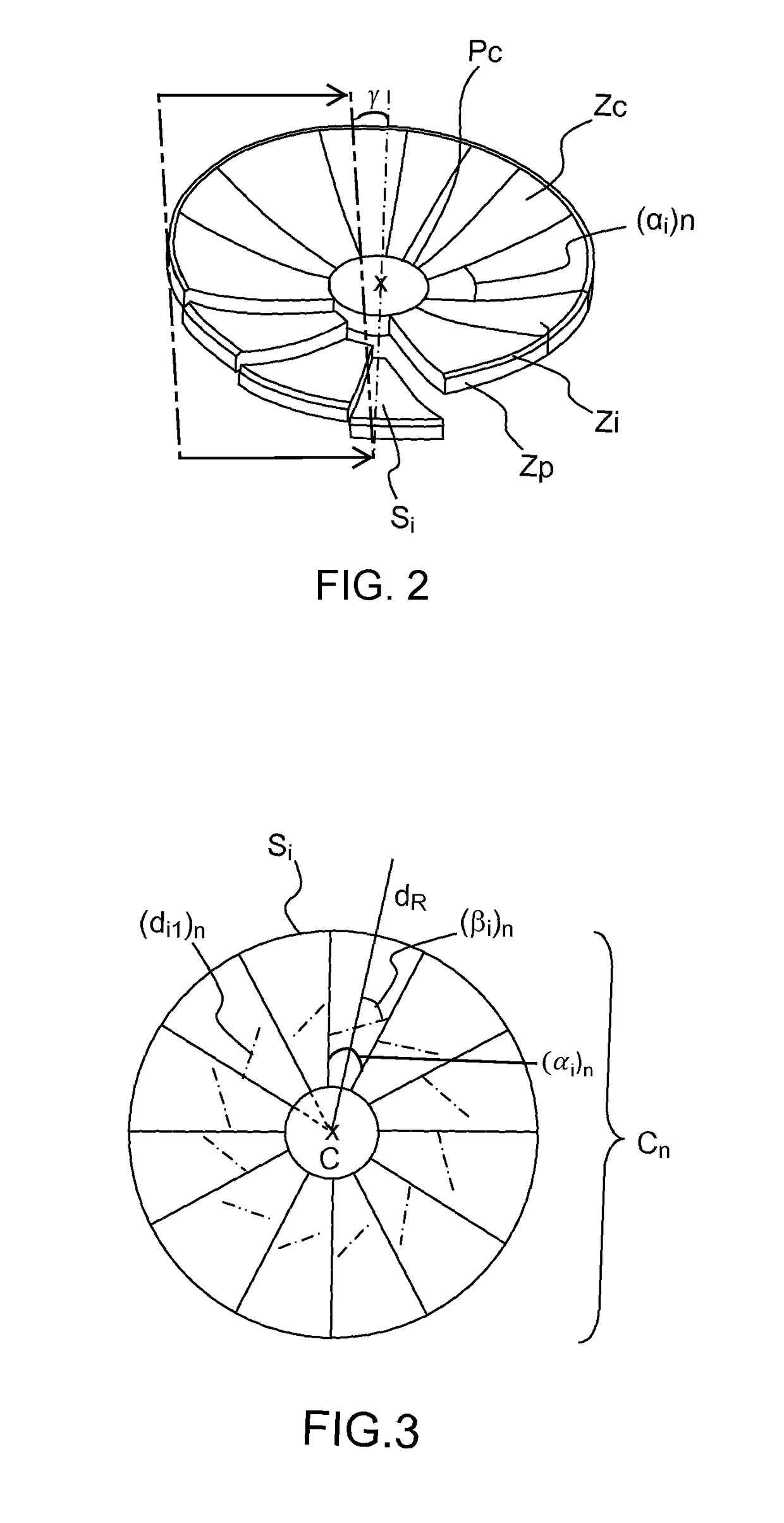Telecommunication antenna reflector for high-frequency applications in a geostationary space environment
a technology of geostationary space and telecommunication antenna, which is applied in the field of telecommunication satellites, can solve the problems of not being able to oversize the reflector to improve the gain, the assembly of this type of structure, and the size and mass of the space to be sent into space, so as to facilitate the assembly of the angular sector, reduce the number of labor hours, and reduce the effect of thermoplastic deformation
- Summary
- Abstract
- Description
- Claims
- Application Information
AI Technical Summary
Benefits of technology
Problems solved by technology
Method used
Image
Examples
Embodiment Construction
[0054]FIG. 1a illustrates a reflector R, comprising a fibrous material M of paraboloidal shape comprising a rim, the diameter of the reflector R being between 250 and 700 mm, and preferably 500 mm. Alternatively, the reflector can be of ellipsoidal shape.
[0055]The concave surface of the layer constitutes the reflective surface of the reflector R and is oriented towards the terrestrial globe. The rim acts as a stiffening ring enabling the structure to be stiffened and resonant frequencies of 60 Hz to be attained at a temperature of 20° C.
[0056]FIG. 1b highlights the component elements of the reflector R. The reflector R comprises a stack of at least one layer Cn. Advantageously, the stack comprises between 2 and 10 layers, the number of layers Cn depending on the type of material used. The required mechanical performance levels can be obtained by considering a superposition of six layers C1-C6.
[0057]FIG. 2 illustrates the different component parts of a layer Cn.
[0058]A layer Cn compr...
PUM
 Login to View More
Login to View More Abstract
Description
Claims
Application Information
 Login to View More
Login to View More - R&D
- Intellectual Property
- Life Sciences
- Materials
- Tech Scout
- Unparalleled Data Quality
- Higher Quality Content
- 60% Fewer Hallucinations
Browse by: Latest US Patents, China's latest patents, Technical Efficacy Thesaurus, Application Domain, Technology Topic, Popular Technical Reports.
© 2025 PatSnap. All rights reserved.Legal|Privacy policy|Modern Slavery Act Transparency Statement|Sitemap|About US| Contact US: help@patsnap.com



